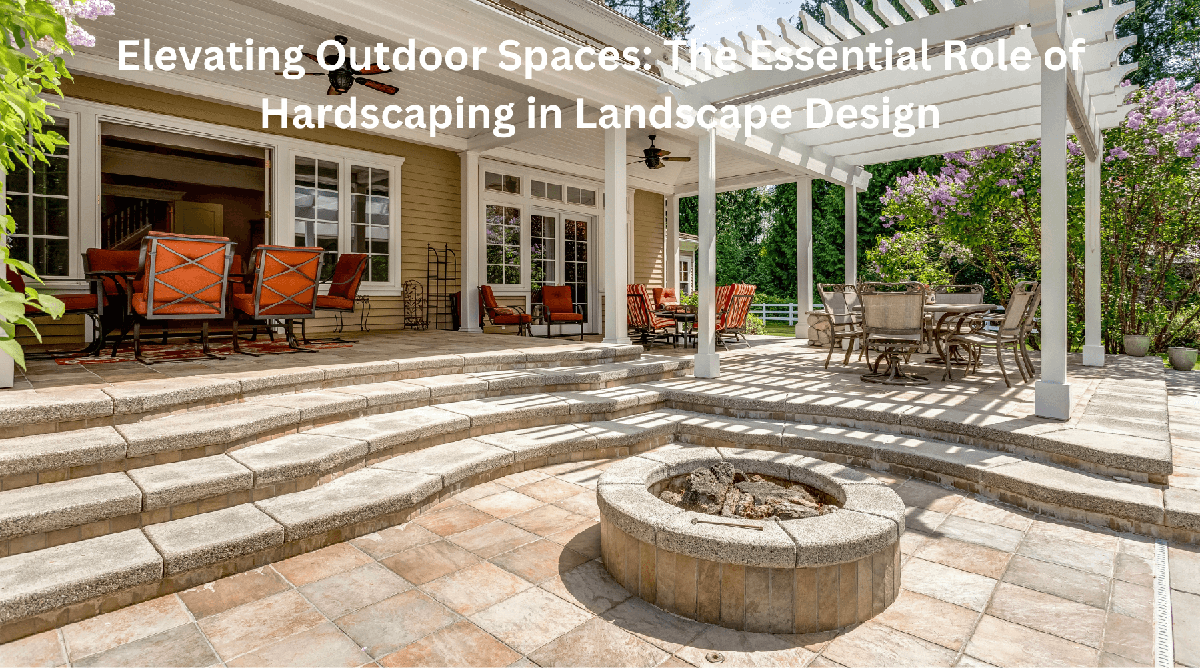Elevating Outdoor Spaces: The Essential Role of Hardscaping in Landscape Design
Elevating Outdoor Spaces: The Essential Role of Hardscaping in Landscape Design

When it comes to crafting an outdoor oasis, many homeowners focus solely on the lush greenery and vibrant flora of their landscape. While plants undoubtedly add beauty and character, the often-overlooked element of hardscaping plays an equally crucial role in achieving a balanced and functional outdoor space. From pathways and patios to retaining walls and water features, hardscaping elements provide structure, functionality, and aesthetic appeal to landscapes of all sizes and styles.
One of the primary benefits of incorporating hardscaping into landscape design is its ability to define and organize outdoor spaces. By strategically placing features such as walkways and borders, hardscaping creates clear pathways and delineates different areas within the landscape. This not only enhances the visual appeal of the outdoor space but also improves its functionality by directing traffic flow and creating designated zones for various activities.
In addition to its organizational benefits, hardscaping also plays a crucial role in addressing practical concerns such as erosion control and water management. Retaining walls, for example, help prevent soil erosion on sloped terrain while also adding dimension and visual interest to the landscape. Similarly, permeable paving materials allow rainwater to infiltrate the soil, reducing runoff and minimizing the risk of flooding.
Furthermore, hardscaping elements can significantly extend the usability of outdoor areas, transforming them into inviting and functional extensions of the home. A well-designed patio or deck provides an outdoor living space for relaxation, dining, and entertainment, allowing homeowners to make the most of their outdoor environment year-round. Fire pits, outdoor kitchens, and seating areas further enhance the experience, creating cozy gathering spots for family and friends to enjoy.
In terms of aesthetic appeal, hardscaping offers endless opportunities for creativity and customization. From the sleek lines of modern design to the rustic charm of natural stone, the choice of materials and styles allows homeowners to tailor their outdoor space to suit their personal taste and complement the architectural style of their home. Whether creating a tranquil retreat or an entertainment hub, hardscaping elements add texture, contrast, and visual interest to the landscape, elevating its overall beauty and charm.
In conclusion, hardscaping is an essential component of landscape design, offering a myriad of benefits ranging from organization and functionality to practicality and aesthetics. By integrating hardscaping elements such as pathways, patios, and retaining walls into outdoor spaces, homeowners can create harmonious and inviting landscapes that enhance the beauty and usability of their property. Whether designing a peaceful garden retreat or a lively entertainment area, the careful incorporation of hardscaping ensures that every outdoor space is both visually stunning and functionally practical.
For expert guidance and assistance in incorporating hardscaping into your landscape design, consider partnering with Sullivan & Sons Land Management. Visit their website at Sullivan & Sons Land Management to learn more about their landscape construction services and how they can help you create the outdoor oasis of your dreams.




